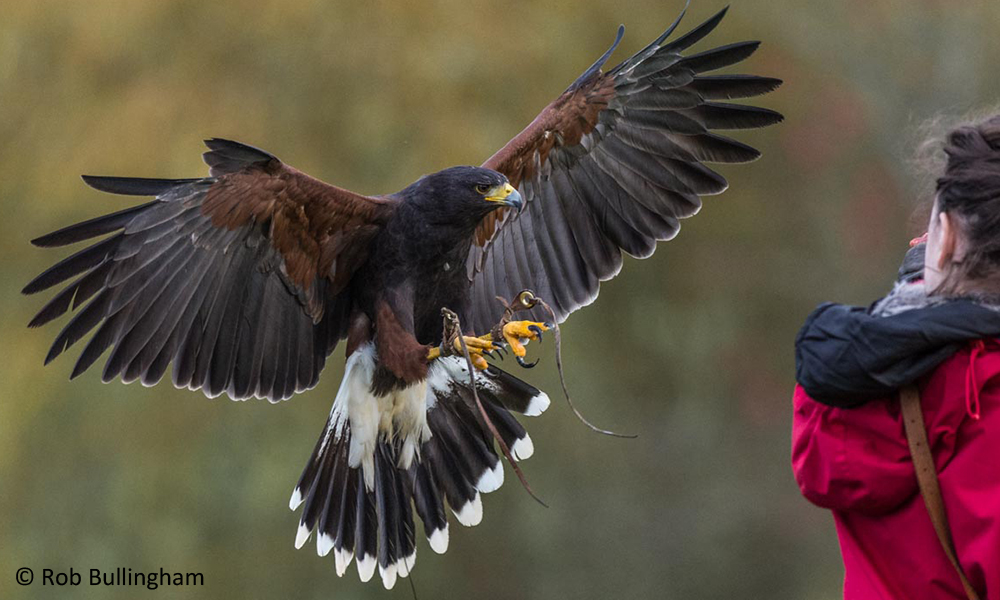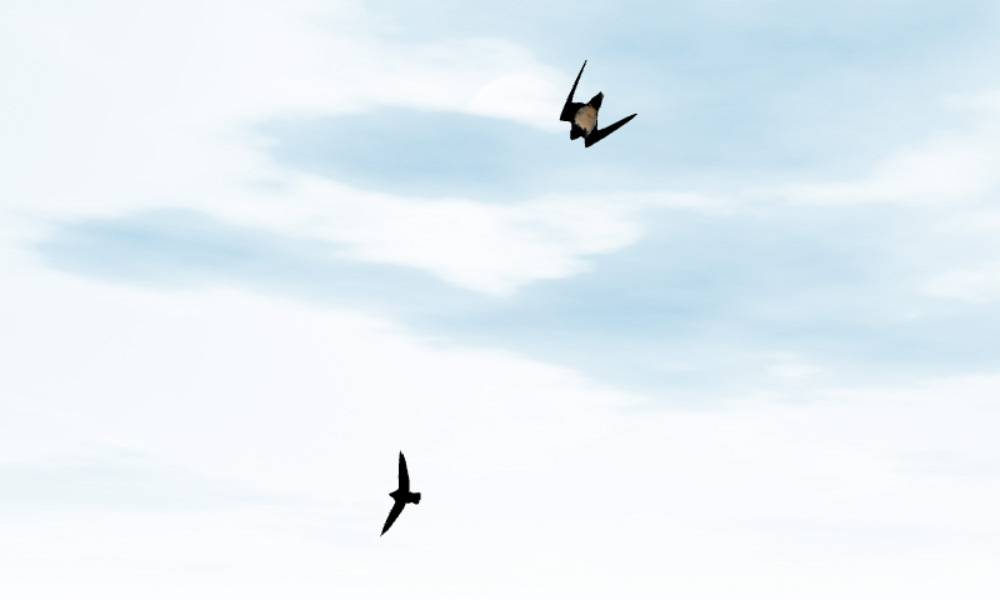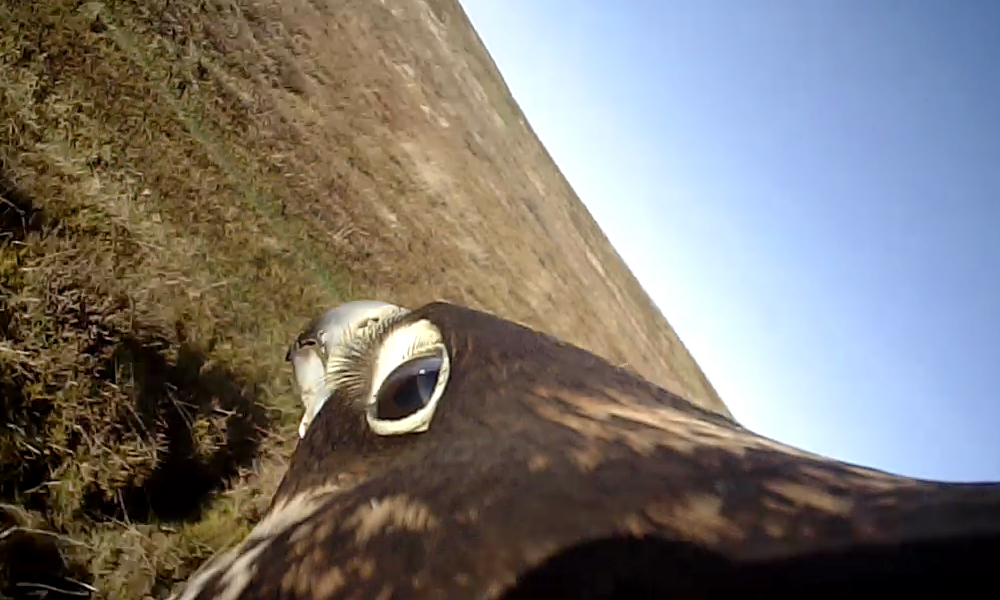Lay summaries
Summaries capturing the main findings of some of our key publications.
Kempton et al. (2023) Visual versus visual-inertial guidance in hawks pursuing terrestrial targets. Hawks and other raptors are skilled at chasing prey on the wing. This requires a fast and accurate response, but what sensory input do they use to achieve this? Here we use a high-speed motion capture system to measure the turning behaviour of Harris' hawks pursuing a manoeuvring target in the lab. By fitting computer simulations of their steering behaviour to our experimental data, we find that the hawks must have been responding to their target's motion relative to some external reference. This reference could have been provided visually using the background over which the target was moving, or inertially using gyroscopic input from the bird's semicircular canals. Our results have implications for drones designed to chase terrestrial targets.

KleinHeerenbrink, France et al. (2022) Optimization of avian perching manoeuvres. Perching at speed is amongst the most demanding flight behaviours that birds perform, and has eluded most autonomous vehicles. We used a Hollywood-style motion capture system to track four Harris’ hawks flying back and forth between perches placed at a range of different spacings on 1,585 flights. Three of the birds were inexperienced juveniles that had only flown short distances previously. These youngsters flapped directly between the perches for their first few flights, but soon learned an indirect swooping behaviour like that of the experienced bird that we tested. By using a physics-based computer simulation to model the birds' flight, we found that swooping minimised neither the time nor the energy taken to travel between perches. Instead, by selecting the right speed and position from which to swoop up to the perch, we found that the birds minimized the distance from the perch at which they stalled, thereby keeping their landings as safe and controllable as possible. When aircraft engineers use computers to solve the problem of perching using a trial-and-error approach called reinforcement learning, it can take a powerful computer tens of hundreds of hours to find an answer. Yet, our work shows that hawks find an optimised solution over a handful of flights, revealing the gap that still exists between natural and artificial intelligence. Besides aiding the design of small aircraft capable of perching like birds, understanding how animals learn complex motor tasks like learning to fly could revolutionise robotics.

Kempton et al. (2022) Optimization of dynamic soaring in a flap-gliding seabird affects its large-scale distribution at sea. Albatrosses are renowned for harvesting energy from the wind gradient that occurs over the ocean's surface, using a characteristic weaving and undulating flight behaviour. This method of exploiting the wind to save effort is called dynamic soaring, and explains how an albatross can travel thousands of miles across the oceans, barely ever flapping its wings. Although dynamic soaring was described scientifically by Rayleigh in 1883, and was noticed nearly 400 years earlier by Leonardo da Vinci, it has remained a remarkably difficult phenomenon to prove – especially in birds that flap their wings as well as glide. Our study shows that small seabirds have also mastered the art of working smarter not harder when soaring at sea, proving that it isn’t just albatrosses that perform the aerial acrobatics needed for dynamic soaring on the windy open ocean. Using bird-borne video cameras and GPS loggers, we show that sleek seabirds called Manx shearwater also use dynamic soaring. The key difference is that by flapping their wings for part of the cycle, shearwaters can perform the same feat of flight in weaker winds. Not only do we prove that shearwaters employ dynamic soaring to harvest energy from the wind; we also find they actively choose conditions that provide an opportunity to work smarter not harder. The fact that Manx shearwater achieve this in UK coastal waters suggests that small maritime drones could pull the same trick to extend their flight range and duration when on patrol.

Mills et al. (2018) Physics-based simulations of aerial attacks by peregrine falcons reveal that stooping at high speed maximizes catch success against agile prey. Peregrine falcons are famed for their high-speed, high-altitude stoops. Hunting prey at perhaps the highest speed of any animal places a stooping falcon under extraordinary physical, physiological, and cognitive demands, yet it remains unknown how this behavioural strategy promotes catch success. Because the behavioral aspects of stooping are intimately related to its biomechanical constraints, we address this question through an embodied cognition approach. We model the falcon's cognition using guidance laws inspired by theory and experiment, and embody this in a physics-based simulation of predator and prey flight. Stooping maximizes catch success against agile prey by minimizing roll inertia and maximizing the aerodynamic forces available for maneuvering, but requires a tightly tuned guidance law, and exquisitely precise vision and control.

Brighton et al. (2017) Terminal attack trajectories of peregrine falcons are described by the proportional navigation guidance law of missiles. Renowned as nature’s fastest predators, peregrines are famous for their high-speed stooping and swooping attack behaviors. We used miniature GPS receivers to track peregrines attacking dummy targets thrown by a falconer or towed by a drone, and fitted a mathematical model describing the dynamics of the guidance system used in interception. We collected onboard video giving a falcon’s-eye view of the attacks, and used this to validate our conclusions for attacks on live targets. Remarkably, we find that the terminal attack trajectories of peregrines are described by the same feedback law used by visually-guided missiles, but with a tuning appropriate to their lower flight speed. Our findings have application to drones designed to remove other drones from protected airspace.

